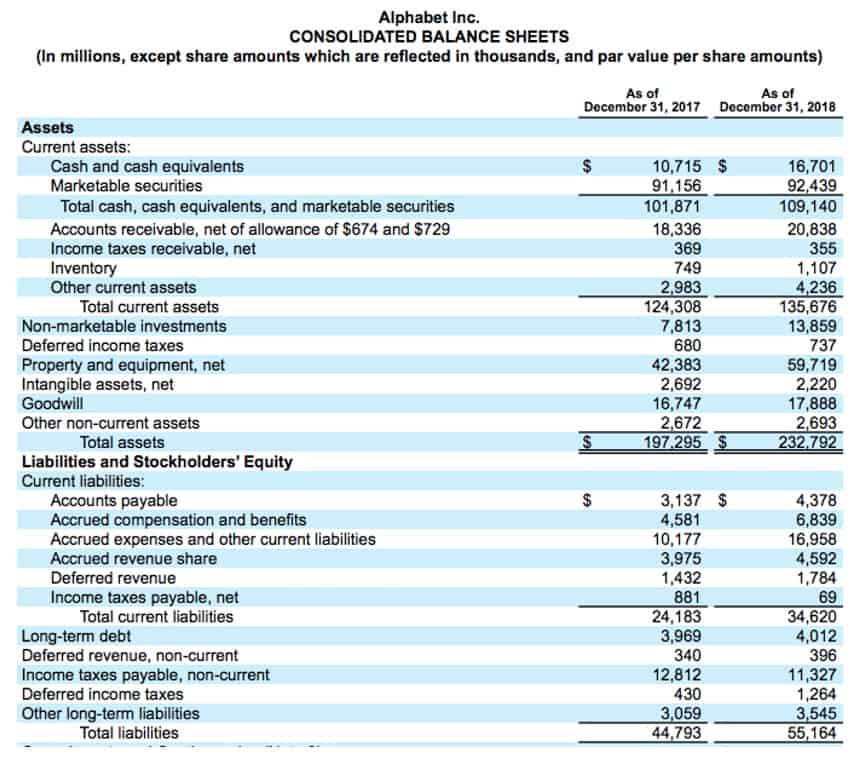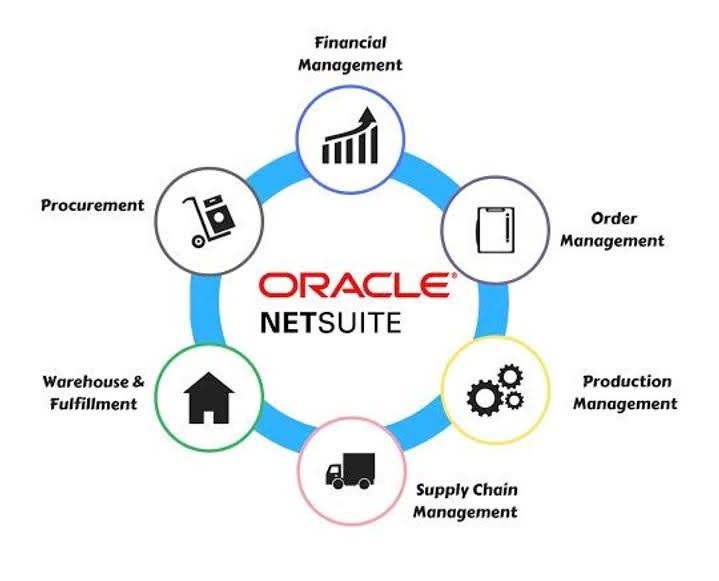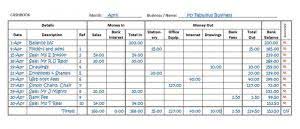Content
- Preparing For Your Annual Audit: What You Need To Know
- Discover Why Over 90% Of Fortune 100 Companies Trust Smartsheet To Get Work Done
- Jordan’s Statutory Framework For Accounting And Auditing
- Types Of Audit
- What Is A Financial Auditor And What Is Their Report?
- The Ultimate Survival Guide For Financial Audits
- External Audits
- Tips To Help Prepare For Your Annual Broker Dealer Audit

If a report is not issued in connection with an engagement, then the documentation completion date should not be more than 45 days from the date that fieldwork was substantially completed. If the auditor was unable to complete the engagement, then the documentation completion date should not be more than 45 days from the date the engagement ceased. Approach the closing of monthly financial statements during the year with audit in mind. Accounts should be reconciled monthly and balances on the financial statements should be traced to their corresponding schedules. This approach ensures you produce accurate monthly financial statements which consequentlylead to annual financial statements with minimal errors or misstatements. An annual independent review and report on the financial records of your housing co-operative is required under the Co-operative Association Act and may be required as part of your annual reporting requirements to funding agencies. Your appointed auditor provides the annual report each year at the Annual General Meeting.
This standard does not replace specific documentation requirements of other standards of the PCAOB. In a job description, a financial auditor evaluates companies’ financial statements, documentation, accounting entries, and data. They may gather information from the company’s reporting systems, balance sheets, tax returns, control systems, income documents, invoices, billing procedures, and account balances.
The next step would be to understand the audit report format, a task that will have you looking for a good audit report example. Fortunately, the PCAOB provides just such an example, displaying the proper audit report format.
Which units, departments, and/or quality systems will the auditor inspect and when? Another important consideration involves examining the results of your previous audits. Your Fraud, Privacy, Fair Lending and industry Quality Control processes are documented. You have an auditor doing the reviews, and everything’s great. Our reviews of the reviewer point out areas of deficiency before a third party can, saving your credibility.
Preparing For Your Annual Audit: What You Need To Know
The cross-functional team must lean in with retraining, tools, etc., along with the individual program manager to ensure success.We win together. A simple way to create a periodic test is totag vendorsin your accounting softwaredue for the next test.

A detailed audit would require me to look at all the accounts in the balance sheet to see if they are proper. This means going to the place of business, looking at the accounts and transactions, and determining what makes the amounts up. I may find something interesting when I look at the major accounts or some smaller ones.
Discover Why Over 90% Of Fortune 100 Companies Trust Smartsheet To Get Work Done
Internal auditors report to your board and senior management within your governance structure and, instead of just providing reasonable assurance to your stakeholders and outsiders, they offer ways to improve your company overall. Performing regular internal audits also shows the external auditors that your company has a means to improve your internal controls and thereby manage your organization effectively. We conducted our audits in accordance with the standards of the PCAOB. Those standards require that we plan and perform the audit to obtain reasonable assurance about whether the financial statements are free of material misstatement, whether due to error or fraud. Our audits included performing procedures to assess the risks of material misstatement of the financial statements, whether due to error or fraud, and performing procedures that respond to those risks. Such procedures included examining, on a test basis, evidence regarding the amounts and disclosures in the financial statements.

4 examples of how software can facilitate strong internal controls. Insufficient data may have obscured the problem until it was too late. Too often it is Finance or an auditor who uncover these problems during the audit.
Jordan’s Statutory Framework For Accounting And Auditing
Assemble schedules and reports requested and place in audit room. If you have a December 31 yearend, you should set up a date with your auditors in late December or early January. At our company, we usually begin the audit in the second week in February and end in the third week. Of course, this will vary by company size, but the goal is always to reduce it as much as possible. Application of these factors determines whether the nature and extent of audit documentation is adequate.
Organizations who receive governmental funds must check certain vendors against the federal and state debarment database. Of course, we test the vendor when the vendor is approved in the organization, but we also need to make sure vendors maintain their status. The repercussions for nonprofits that fail to meet expected outcomes are not just larger, but they are also different.
- Understanding the audit report format is vital, and can make the process much smoother and successful for any business.
- To start, risk areas should be identified and prioritized in the probability of occurrence and potential impact.
- Knowledgeable employees who know the value of the annual audit will carefully follow the rules and regulations to ensure your company stays compliant at all times.
- Not only are they closing the books for the year, but they’re also preparing for an audit.
They be expensive and make you unsure about what your auditor will find. However, if you plan ahead of time, you can save money and assure that your auditor’s findings are only helpful.
Types Of Audit
All schedules must tie in to the general ledger, or they are of little value. If you present the financial statements, the books and the related analyses in a well-organized three-ring binder, you’ll cut an incredible amount of time off the audit. Non-financial changes should be considered as well, such as if internal control systems and management accounting standards have been altered. Financial statements are prepared in accordance with relevant accounting standards and are meant to provide information for decision-makers such as investors, creditors, and other stakeholders. If the information cannot be trusted, it will undermine the stakeholders’ willingness to engage with companies. However, preparation and planning can help ensure you can achieving a smooth and successful audit. Then, those expressed needs, as well as the audit procedures that will be performed should be discussed with management.
Learn about relief funds governments have available to invest in nonprofits and how to advocate for them. The information provided here is not investment, tax or financial advice. You should consult with a licensed professional for advice concerning your specific situation. Your next audit will be a win-win situation—for both the CPA firm and your company—and everyone will come out less stressed and happier with the results and the fees.
According to Oracle’s 2021 “New benchmarks for security, risk, and audit” report, 30% of surveyed financial executives said lack of upper management support was one of the top challenges to their audit process. Inquire of management and others to gain an understanding of the organization itself, its operations, financial reporting,and known fraud or error. Ideally, you’ll be able to present the auditor with a full set of financial statements for the year run from your accounting software package as well as the corresponding trial balance and general ledger. If the company’s been audited before, the changes in its financial situation from the last audit should be taken into consideration.
- Even if you have no reason to be nervous about what your nonprofit’s auditor will find, accommodating and preparing for an audit can be stressful for you and your staff.
- It is normal to be nervous about an impending company audit.
- Still, auditors perform more detailed work when it comes to finding fraud or errors in financial documentation.
- Audits are a process where a company’s financial records are examined and verified to ensure accuracy and fair representation.
- 6If no audit committee exists, all references to the audit committee in this standard apply to the entire board of directors of the company.See15 U.S.C. §§ 78c58 and 7201.
- Specifically, make sure that subsidiary ledgers are reconciled and ending balances have been reviewed before field work begins.
An audit report is the final document that wraps up the audit. It is your written auditor opinion prepared in the standard format delineated by GAAS. Auditors write reports for users of the company’s financial statements. If your company is public, you include these reports when filing with the SEC.
Being better prepared with appropriate financial records is something the company can control to reduce the cost. Umapathy Anuruthan, is a Senior Auditor at the firm, holds a Business Management Degree and carries with him an experience of 6+ Years, having worked in two of the Big 4 audit firms. He has a ‘hands-on’ understanding of external audits and financial reporting and is well-known for his approach to ensuring the highest quality and accuracy in audits for clients of numerous industries. It’s also important to understand what an audit report is and what is its purpose.
What Is A Financial Auditor And What Is Their Report?
Audit documentation must not be deleted or discarded after the documentation completion date, however, information may be added. Any documentation added must indicate the date the information was added, the name of the person who prepared the additional documentation, and the reason for adding it. Demonstrate that the underlying accounting records agreed or reconciled with the financial statements. Supervisory personnel who review documentation prepared by other members of the engagement team. The successful outcome of an external audit is key to the success of the organization. Funders look for clean opinions and no adverse financial findings.
Trust in and rely on input from the employees who are directly involved in the process being audited. After all, they’re the ones in the driving seat and know better than anyone else how things work in practice. What’s more, doing so reduces the likelihood that you’ll give the wrong answers or create any misunderstandings. By actively probing auditors, you’ll often uncover a wealth of information during your audits.
SAS no. 83 (and SSAE no. 7), Establishing an Understanding With the Client , and SAS no. 84, Communications Between Predecessor and Successor Auditors , can affect the way you work with current or future auditors. 2/ Relevant financial statement assertions are described in paragraphs 28–33 of PCAOB Auditing Standard No. 5, An Audit of Internal Control Over Financial Reporting That Is Integrated with An Audit of Financial Statements. The documentation requirements in this standard regarding assertions apply to the aspects of the subject matter to which the assertions relate. Sufficient information to enable the office issuing the auditor’s report to agree or to reconcile the financial statement amounts audited by the other auditor to the information underlying the consolidated financial statements. Experts in reading audit reports recommend paying special attention to the introductory paragraphs, especially those concerned with management and auditor responsibilities, scope, and opinion. If you read and become familiar with audit reports, you will see that although each company is different, the reports are homogeneous and provide an excellent way to learn about a company.
The United States Government Accountability Office also puts out checklists for federal auditing. Additionally, there are self-assessment checklists you can review prior to your audit, whether your business is public, private, or nonprofit. Audit planning is a process that identifies all business areas; assesses the risk of each using a standard methodology; and uses available audit and financial resources to determine which audits will be performed during a year. While the format for an audit plan may vary from organization to organization they all should include common elements. Nobody likes taking tests, and unfortunately that’s what independent audits sometimes feel like. Even if you have no reason to be nervous about what your nonprofit’s auditor will find, accommodating and preparing for an audit can be stressful for you and your staff. But if you understand what the process entails and ensure that the right records are available, you’re more likely to be comfortable with the audit — and its results.
Be responsive to any requests for further information during fieldwork from auditors. Communicate to internal accounting staff that it is a top priority for them to assist in producing any documentation requested on time.
A bad audit can prevent the flow of funding needed to keep the organization afloat as well as your ability to raise future revenue. As the audit commences and progresses, be available to the auditors. This will enable timely closure of queries and clarifications https://www.bookstime.com/ sought. Remember you belong to a profession with ethical codes of conduct. Also, keep management abreast of audit progress especially where major or material issues are raised. Ask the Auditors for a list of required audit documents well ahead of time.
The Ultimate Survival Guide For Financial Audits
Knowing what areas to audit and where to commit resources is an integral part of managing the internal audit function. CommunicationContinuous communication with the auditors will help you and the auditors plan for an efficient and effective audit. These may include a business combination, new revenue streams, new agreements, or other items that may create more audit work or require complex accounting.
External Audits
Every audit requires dedicated time, precise coordination and extensive resources. Audit firms work with many clients and schedule their people and resources months in advance of the actual audit. If the company being audited isn’t ready at the designated time, an audit firm’s resources may not be available. This can lead to significant delays and potentially missing important debt covenant or regulator deadlines, resulting in unhappy shareholders.
Tips To Help Prepare For Your Annual Broker Dealer Audit
This standard establishes general requirements for documentation the auditor should prepare and retain in connection with engagements conducted pursuant to the standards of the Public Company Accounting How to Prepare for an Annual Audit Oversight Board (“PCAOB”). Such engagements include an audit of financial statements, an audit of internal control over financial reporting, and a review of interim financial information.









